
Satellite Technology Market – Satellite technology has been instrumental in shaping the modern world, from the way we communicate to how we observe our planet. In recent years, this field has witnessed unparalleled growth and innovation, fundamentally altering various sectors of the global economy. As we explore new frontiers in space, the impact of these technologies is only set to increase, influencing everything from daily communications to advanced research and national security.
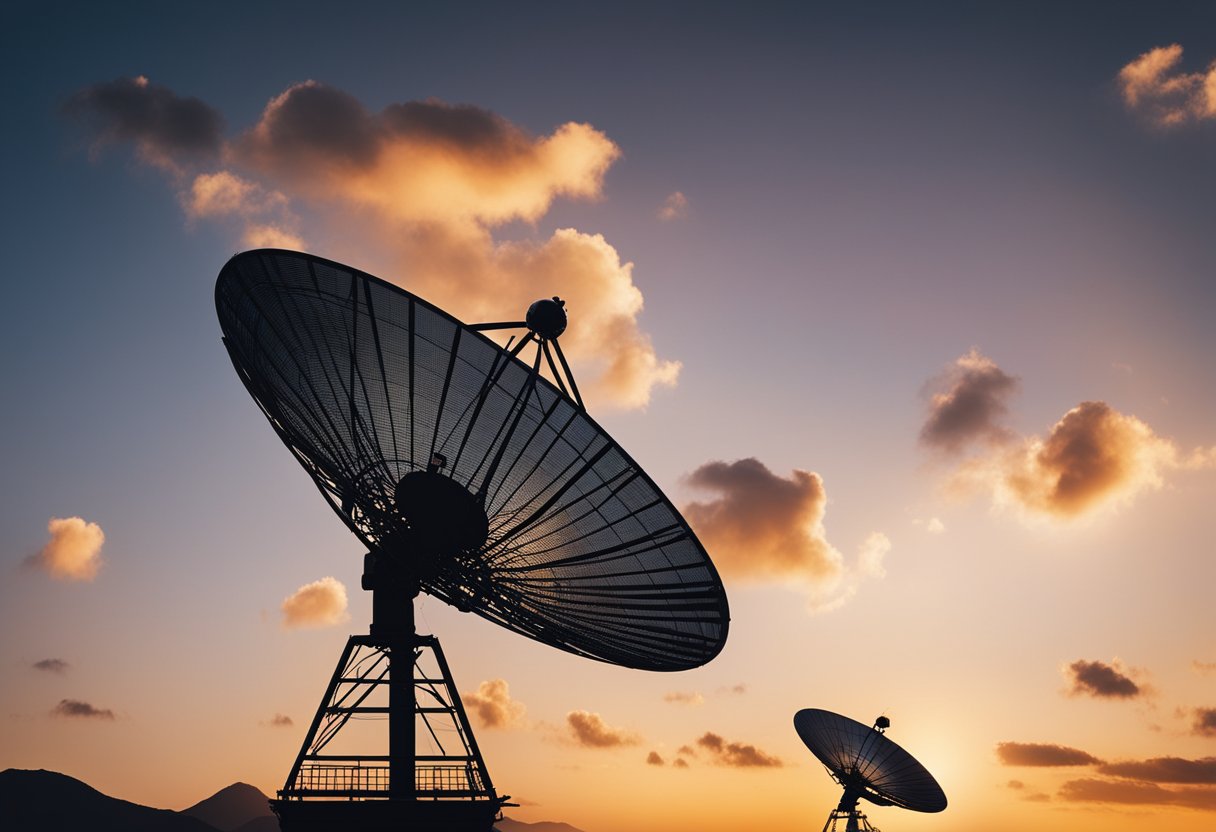
The evolution of satellite technology has been marked by significant milestones that have expanded its applications. These advancements have facilitated better connectivity, even in the most remote regions, and have provided crucial data for climate monitoring and disaster management. The satellite industry’s dynamics are now more complex, influenced by a competitive push for innovation, lower costs in launching and manufacturing, and the development of vast orbital constellations. Artificial intelligence and machine learning are also becoming increasingly important, enabling more sophisticated data analysis and autonomous operation of satellite networks.
The satellite technology landscape is continuously evolving, with each stride forward building upon key historical developments and driven by remarkable innovations in recent years.
We’ve witnessed significant milestones since the launch of the first artificial satellite, Sputnik, in 1957. This pioneering event catalysed the age of space exploration and satellite communication. In 1962, we saw the birth of satellite television with the launch of Telstar, which facilitated live transatlantic broadcasts. Skipping ahead to the 1990s, the ushering of the Global Positioning System (GPS) fundamentally transformed our navigational capabilities.
The recent years have shown impressive technological advancements in satellite technology. The introduction of very high throughput satellites (VHTS) has revolutionised satellite communication, providing enhanced data capacity and coverage. Artificial Intelligence (AI) and machine learning have been instrumental in optimising satellite operations and data processing, yielding more efficient and accurate Earth observation (EO) technologies.
Additive manufacturing, commonly known as 3D printing, has empowered us to create satellite components more rapidly and cost-effectively, which is a monumental leap in satellite design and production. With these innovations, our ventures in space tourism, like those catalogued on SpaceVoyageVentures.com, are closer to becoming mainstream, making the cosmos more accessible than ever before.
In this era of digital transformation, we’re witnessing a significant impact on communication and connectivity, driven by the evolving satellite technology market. Our focus here is on how satellite innovations are enhancing broadband services and expanding communication across various sectors.
We’ve seen substantial advancements in satellite broadband services. Satellite connections are becoming increasingly important for remote areas where traditional broadband is hard to deploy. The increase in launch capacity and the emphasis on smaller, lighter, and power-efficient satellite technologies mean that broadband reach is expanding, bringing reliable internet access to new markets. With the global satellite communication market expected to grow considerably, the push towards lower size, weight, and power (SWaP) initiatives is creating new opportunities for broadband service providers.
Satellite services are also critical in the expansion of communication services, where they offer unique advantages, particularly in geographies that are challenging for terrestrial infrastructure. As 5G technology rolls out, satellite communication is pivotal in bridging the gap between densely populated urban areas and underserved communities. Communication service providers leverage satellite capabilities to ensure global coverage and redundancy, which is crucial for maintaining uninterrupted service. Satellite’s role in the satellite services market is not just as a standalone solution but also in complementing existing networks to create a more resilient global communication infrastructure.
Moreover, the integration of satellite technology with 5G has the potential to enhance connectivity speeds and reduce latency, opening up new possibilities for both consumers and communication service providers. Satellite services are fundamental in extending 5G’s footprint, offering a compelling solution for global communications in the modern era.
In this section, we explore the pivotal roles that satellite technology plays within critical sectors. Each application demonstrates how satellites enhance capabilities and provide vital data for informed decision-making.
Satellite technology in agriculture is a game-changer, enabling precision farming techniques that boost productivity and sustainability. Through high-resolution imagery, we can monitor crop health, assess drought impact, and manage resources more efficiently. For instance, satellites aid in soil moisture measurement which is crucial for optimising irrigation.
The military and national security sectors heavily rely on satellite capabilities for operations ranging from reconnaissance to communication. Real-time imagery from satellites supports intelligence gathering and terrain analysis, ensuring that our defence forces are equipped with up-to-date information. Additionally, secure satellite communication channels are critical for maintaining robust command and control systems.
In the oil and gas industry, satellites contribute significantly to exploration and monitoring activities. We leverage satellite sensors to detect oil seepage and to map the geological features of prospective drilling sites. Moreover, with constant satellite surveillance, we can oversee pipeline infrastructure and respond swiftly to potential leaks or illegal siphoning activities.
Our knowledge extends to the burgeoning field of space tourism. Though not directly linked to the sectors mentioned above, it’s a testament to the vast potential of satellite technologies.
We’re familiar with ventures like SpaceVoyageVentures.com, which is at the forefront of showcasing early space tourism opportunities. They document possible future trips, covering both existing and near-future tourist experiences beyond Earth’s atmosphere. Satellite technologies play a crucial role in ensuring these experiences are safe and accessible.
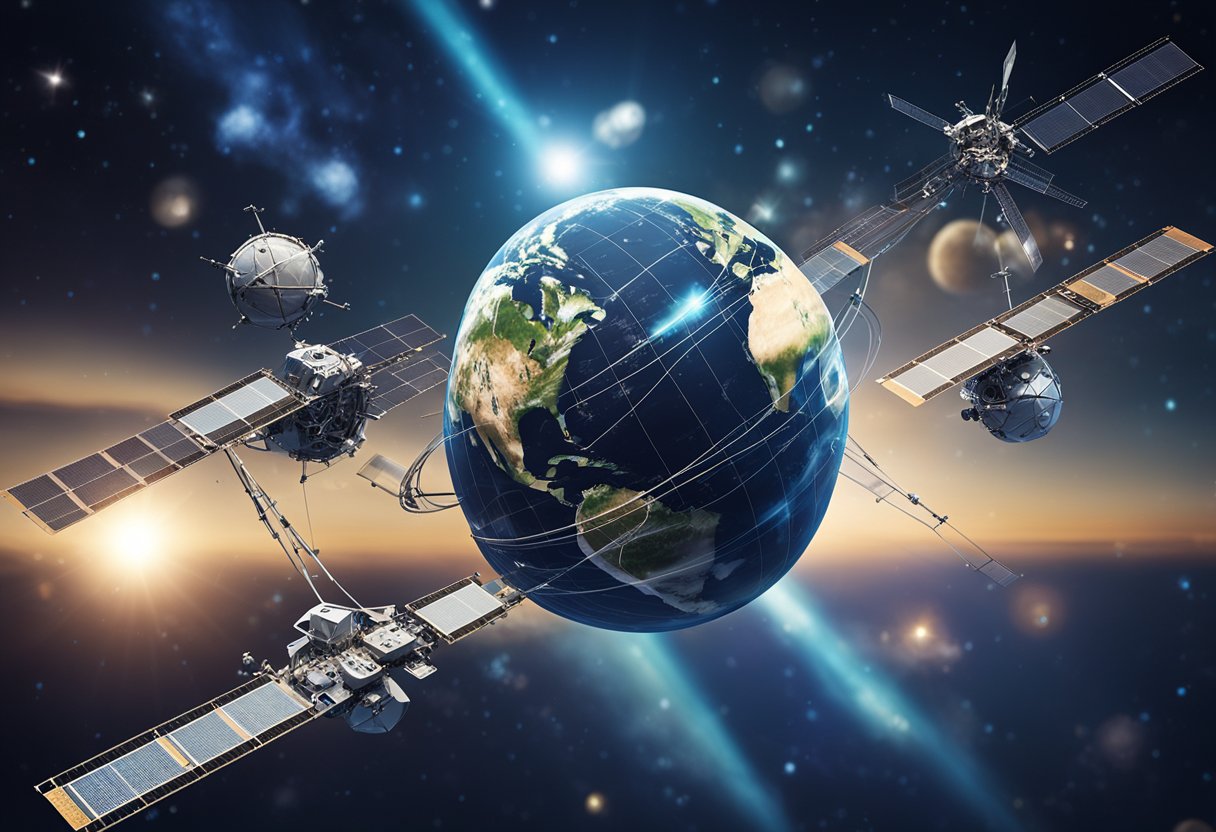
In this section, we explore the concrete expansion of the satellite industry and examine the effect of fresh participation by startups and private investment.
The global satellite industry continues to exhibit strong growth. A tangible increase in the sector’s revenues signals a robust trajectory. For instance, 2022 saw the global satellite industry revenues hit a remarkable figure of $281 billion. This expansion is facilitated by the compound annual growth rate (CAGR), which serves as a critical metric assessing the market’s health over time. Notable markets such as the U.S., UK, India, Korea, and Canada have seen an uptick in satellite-related activities.
Startups have infused the satellite industry with innovative solutions and bespoke technologies. The surge in private investment has not only accelerated market dynamics but also fostered a fertile environment for groundbreaking endeavours. This influx is reshaping industry benchmarks, with private entities eyeing lucrative opportunities within the space tourism niche. An illustrative example is Space Voyage Ventures, a pioneering entity documenting the nascent space tourism sector. Despite the setback caused by the COVID-19 pandemic, the resilience and burgeoning investment in the industry demonstrate its potential for sustained growth.
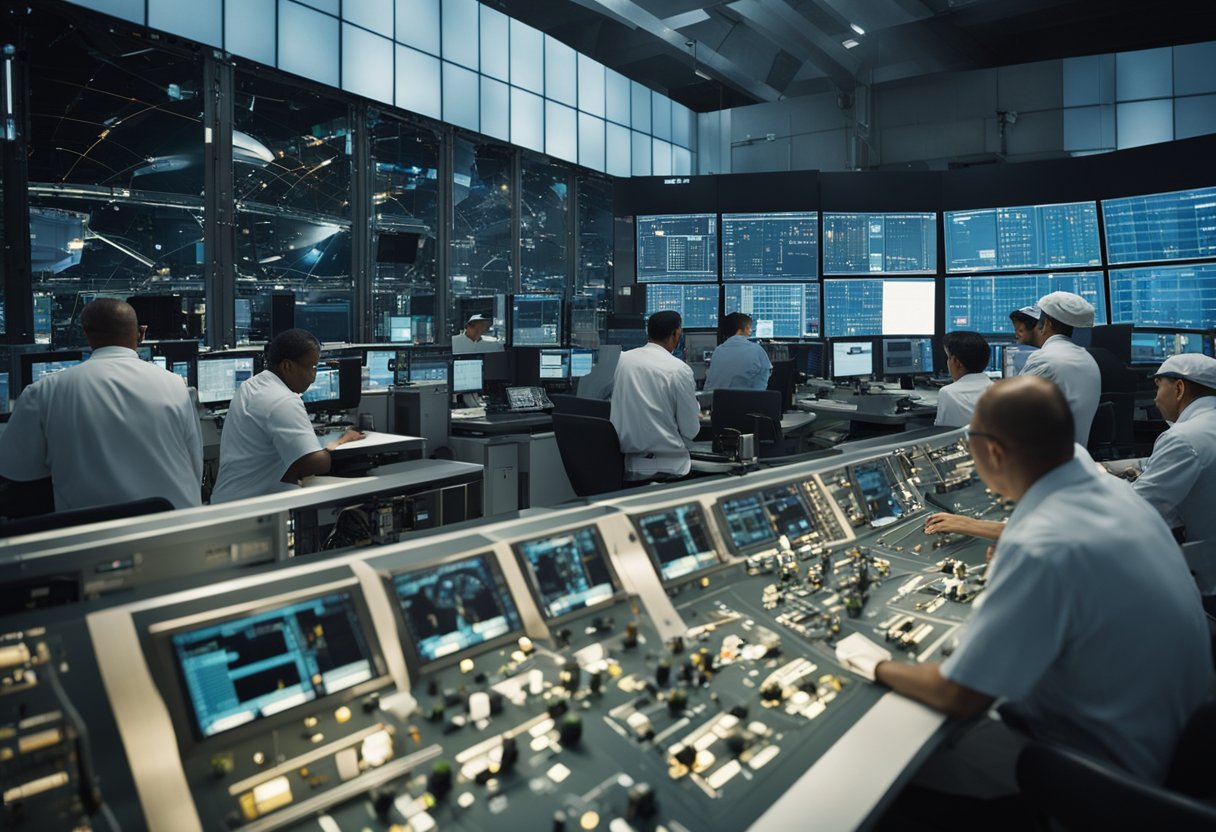
The space industry is witnessing rapid progression with notable advancements in launch vehicles and satellite manufacturing techniques. These advancements are revolutionising how we approach building and deploying constellations of small satellites.
Emerging companies, such as Relativity Space, are at the forefront of an evolution in launch vehicle technology. Our industry is adopting 3D printing methods to create components for rockets more efficiently than traditional manufacturing. This innovation significantly reduces the time and cost required to produce launch vehicles. We have also seen a shift towards reusable launch systems, which are set to decrease the cost per launch, making satellite deployment more accessible. Furthermore, dedicated rideshare services enable small satellites to be a part of payload deliveries, fostering a new era of satellite constellations.
The satellite manufacturing landscape is transforming, fuelled by demand for small satellites, which are becoming pivotal for constellations due to their lower cost and versatile applications. We are moving toward scalable production processes, which allow us to mass-produce satellites with consistent quality. Within satellite manufacturing, there’s an emphasis on reducing size, weight, and power (SWaP) requirements to optimise launch efficiency and functionality in space.
Coupled with the rise of small satellites is the trend of miniaturisation of onboard systems and increasing use of AI to automate satellite operations. These trends aim to enhance the capabilities of satellites while maintaining a smaller form factor, vital for the cost-effective expansion of satellite constellations.
Through these collective efforts in innovation, we’re enabling a more robust and versatile future for space endeavours, not only for commercial applications but for pioneering initiatives in space tourism, which platforms like SpaceVoyageVentures.com are starting to document.

In the ever-evolving landscape of space technology, the dynamics of orbital realms have shifted significantly, especially with the rising number of satellites in various orbits around Earth.
The surge in Low Earth Orbit (LEO) satellite deployments is primarily fuelled by the advent of LEO mega constellations. Recent years have seen a dramatic increase in LEO activity due to the lower costs and advanced capabilities of these satellites. These developments have had profound impacts on fields ranging from global communications to earth observation. Examples of these constellations include projects like SpaceX’s Starlink, which aims to provide ubiquitous internet coverage.
It’s estimated that, if planned constellations reach fruition, there could be over 100,000 satellites in LEO in the next decade. This influx poses challenges for orbital debris management and has necessitated the development of improved surveillance and tracking systems for satellite constellations.
In contrast, Geostationary Orbit (GEO) and Medium Earth Orbit (MEO) have traditionally been geared towards applications requiring a large coverage area, such as satellite television and geospatial services. The GEO belt, located approximately 35,786 kilometres above the Earth, is where satellites maintain a fixed position relative to the surface.
However, changes are afoot in these orbital regions too. Satellites in these orbits are being upgraded to offer higher throughputs and more specialised services. At the same time, innovations in MEO are emerging, with satellites placed in this zone to create a middle ground between LEO and GEO for applications such as navigation and space science missions.
Our technological advances in satellite constellations have not only expanded our capabilities but also our responsibilities in space. At SpaceVoyageVentures.com, we’re charting the transformative journey from today’s satellite communications to the potential of space tourism, recognising that initiatives in various orbits are making space more accessible than ever.
Artificial intelligence (AI) and machine learning (ML) have become instrumental in advancing satellite technology, offering innovative ways to manage the vast data these systems collect and supporting their adaptive control in space.
Software-defined satellites have revolutionised our approach to space technology. These satellites leverage AI to become more flexible and cost-effective, with the ability to reconfigure systems and missions after launch. This adaptability means we can respond to changing demands without the need to deploy new hardware, a significant step forward compared to traditional, rigid satellite designs. An example of their impact can be seen in our capacity to plan space tourism, where satellites with AI-driven systems are critical for navigation and communications. A burgeoning industry, such as described on SpaceVoyageVentures.com, relies heavily on such advanced technology to ensure safety and efficiency in operations.
The integration of data analytics and machine learning algorithms in satellites has also led to unprecedented advancements. Our ability to process data onboard with AI-enhanced speeds helps sift through the massive amounts of information gathered from Earth observation. This processing power results in reduced latency and higher-resolution data availability. By employing machine learning algorithms, we can provide faster insights to users, improving decision-making in areas like environmental monitoring, disaster response, and global security.
Through the implementation of cutting-edge AI and ML, software-defined satellites and powerful data analytics strongly reinforce each other, enabling advancements that impact not only space technology but also how we perceive and utilise space for our various endeavours.
In this section, we discuss the significant role of satellite technology in understanding and combating climate change through earth observation and monitoring, and the influence it has on climate research and policy-making.
Satellites equipped with remote sensing technology provide us with an unparalleled perspective on Earth’s climate systems. By utilising instruments that can measure infrared and other spectra, we accurately monitor environmental changes. These observations include tracking the retreat of glaciers, deforestation rates, and the health of marine ecosystems. For example, NASA’s satellites have been instrumental in creating a long-term record of atmospheric, land, and ocean changes, which is crucial for our understanding of climate trends.
The data collected through satellite technology are vital to scientific research in climate change. High-resolution monitoring enables the tracking of greenhouse gas emissions with greater precision, assisting not just in understanding the current state but projecting future climate scenarios as well. Organisations such as GHGSat use this technology to provide data that influence international climate policies and commitments. These insights help shape policies that aim to mitigate the adverse effects of climate change and support sustainable environmental stewardship.
Our approach is rooted in the belief that accurate and accessible data drives effective policymaking, and satellite technology is a cornerstone of this conviction.

The proliferation of space debris has created significant challenges for current and future space missions. Our efforts to mitigate this issue are crucial in preserving the integrity of vital satellite infrastructure and ensuring the sustainability of space exploration.
We recognise that effective management of space debris is imperative. It involves tracking and cataloguing debris to prevent collisions. Innovation in this sector includes developing technologies that can remove or repurpose debris. Our collaborative international efforts aim to establish guidelines for the responsible use of space and the minimisation of debris creation from the outset of any mission.
New advances in refueling and mission extension technologies extend the lifespan of satellites, making space exploration more sustainable. In-space manufacturing and microgravity environments open up possibilities for in-orbit repairs and manufacturing, reducing the need to launch new materials. This reduces potential space debris and enhances the efficiency of our space assets.
We are committed to pioneering the path for a cleaner and safer space environment, which supports humanity’s aspirations for space exploration.
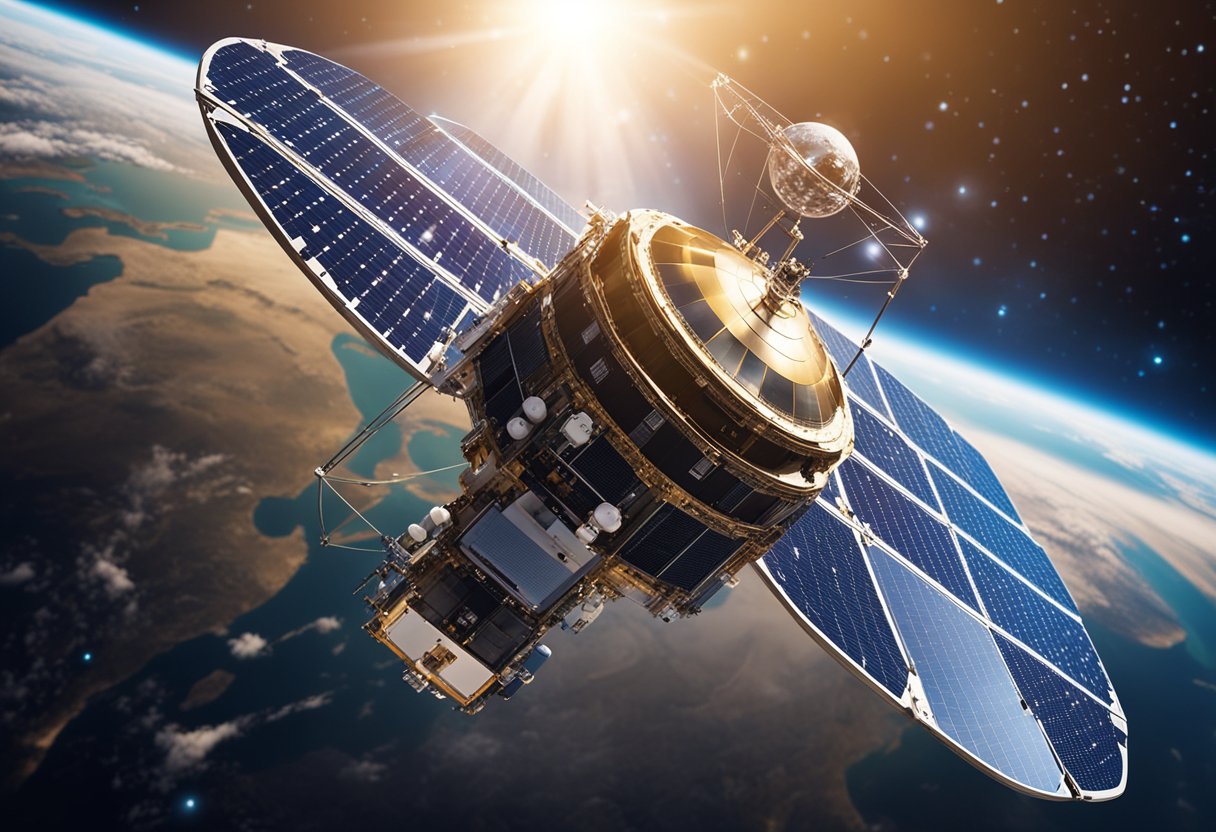
In the rapidly evolving tech landscape, the fusion of satellite communications and IoT is revolutionising data exchange and connectivity across global industries.
The combination of satellite networks with Internet of Things (IoT) devices is instrumental in overcoming the limitations of terrestrial communication services. With global coverage, satellite communication enables IoT devices, such as sensors and trackers, to transmit data even from the most remote locations. For diverse industries like agriculture and environmental monitoring, integrating satellite communications into IoT networks ensures real-time, reliable data flow, critical for decision-making and operations management.
Hybrid services entail the use of both satellite and terrestrial networks to offer robust connectivity solutions. Particularly in fleet space, where consistent and comprehensive monitoring is crucial, hybrid services present superior tracking and management capabilities. For instance, vehicles or ships equipped with IoT-connected devices can maintain uninterrupted communication through satellite networks when out of range of terrestrial networks, thus enhancing the efficiency and safety of fleet operations.

In the domain of satellite operations, security and privacy issues are of paramount concern, impacting both military and commercial spheres. We recognise that the burgeoning satellite technology market can both bolster our defence capabilities and accelerate economic growth, yet it is imperative that we safeguard sensitive data and maintain operational integrity.
In the context of national security space, the U.S. Space Force and defence contractors like Northrop Grumman are actively engaged in enhancing military satellite security. These entities confront a slew of security concerns, ranging from adversarial threats to the integrity of communication systems. It is vital for defence satellites to employ robust encryption and intrusion detection systems to mitigate risks of interception and sabotage. Our operations in this sector are driven by the need to ensure that military communications, navigation, and reconnaissance remain impregnable.
Commercial satellite imaging and communication services must also uphold stringent security measures to protect client data. Satellite service providers are deploying advanced cybersecurity protocols to secure the data against unauthorised access and use. Privacy in commercial satellite operations involves safeguarding the massive amounts of satellite-generated data on both a corporate and individual level. Regulations and technologies are in place to ensure that entities like SpaceVoyageVentures.com, which documents space tourism opportunities, handle sensitive information with due diligence. We must ensure that our commercial endeavours, while catalysing innovation, also preserve the privacy of consumers and companies alike.
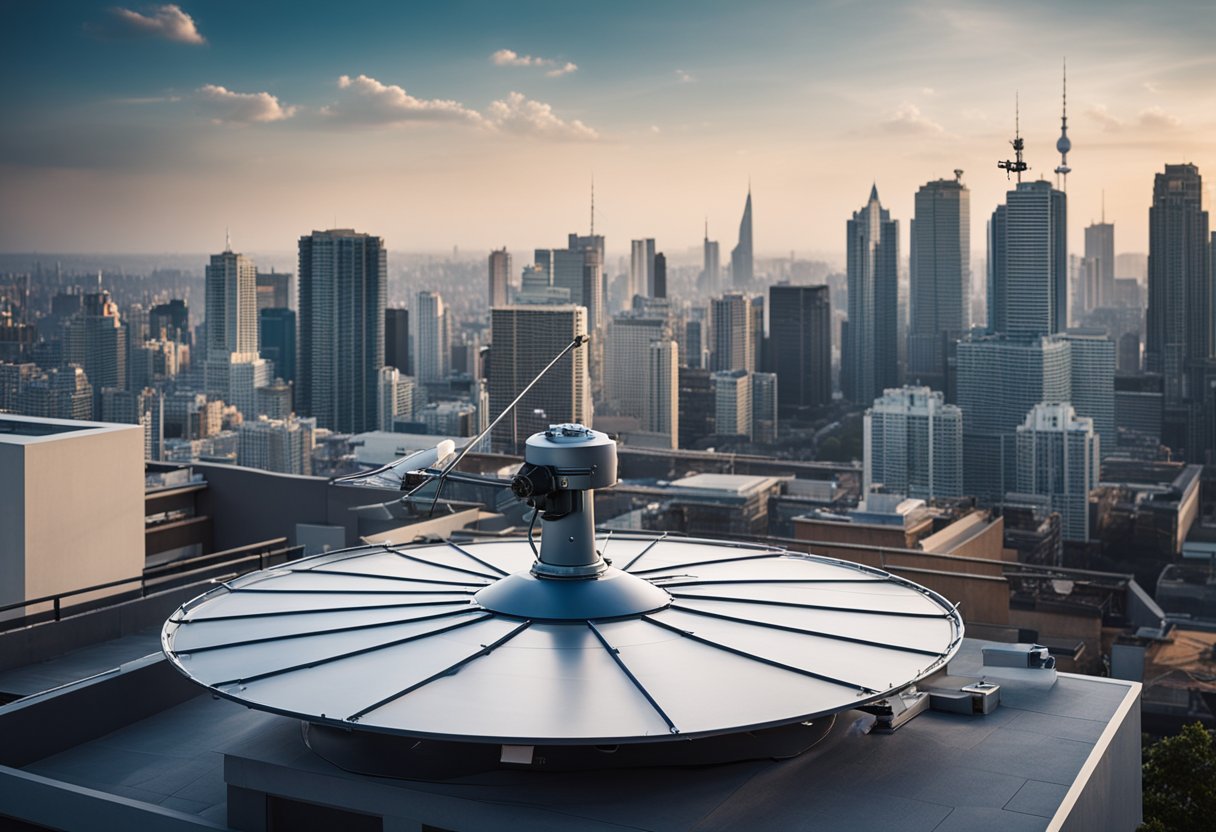
In this section, we address some of the most common inquiries regarding the ever-evolving satellite technology market and its impact on global communications and services. These FAQs reflect the industry’s current state and anticipated trends.
The global satellite communication (SATCOM) market experienced a strong valuation at USD 77.08 billion in 2022 and is forecasted to burgeon with a compound annual growth rate (CAGR) of 9.7% leading up to 2030. More details can be found in the SATCOM Market Size Report 2030.
The satellite broadband market, powered by increasing demands for high-speed internet across remote areas, was valued at USD 8,231.47 million in 2022. It is predicted to expand at a CAGR of 13.6% from 2023 to 2030, reflecting a significant growth trajectory. Insights are elaborated in the Satellite Internet Market Size & Share Analysis Report, 2030.
The satellite communication industry is characterised by a variety of dominant sectors including satellite broadcasting, military communications, and broadband internet services. These segments are crucial for global connectivity and the delivery of content and data services.
The growing need for real-time data and predictive analytics drives the market for satellite-based analytics, influencing sectors such as agriculture, urban planning, and environmental monitoring. Though specific figures aren’t provided, the significance is underscored by the industry’s consistent investment in enhancing data acquisition and analytic capabilities.
Emerging trends shaping the satellite sector include the miniaturisation of satellites, increased focus on satellite constellations for global coverage, advancements in propulsion technology, and an uptick in demand for satellite-as-a-service offerings. The Satellite-as-a-Service Market Size & Share Analysis further explores these trends.
The burgeoning demand for satellite services is propelling market expansion across diverse applications like weather forecasting, global positioning, and space tourism. Innovations in low Earth orbit satellites and reusable launch systems are also actively shaping the industry’s growth pattern, catering to the diverse needs of consumers, businesses, and governments.